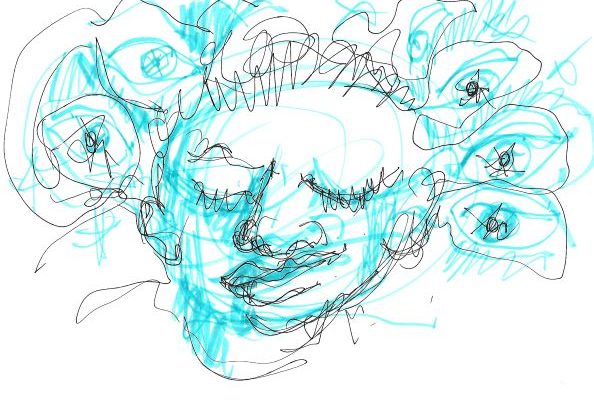Heroes and Scapegoats
As you can probably tell I’m unimpressed by the idea of male genius in art and male heroes in political history, when its written by men. It’s a useful trick to focus on a key individual in an epoch when there’s an exam looming but it leaves women out and falsifies history. it also allows people to punish a single scapegoat instead of looking at collective responsibility. Slavery in the Caribbean plantations, for example, was so deeply embedded in British society in the 1800s that it was possible for a vicar’s daughter who never saw an African or a sugar crop to profit from it. Jane Austen’s novels describe middle class ladies in a world in which its wealth originated in slavery and its wars were fought for control of that trade. If compensation had not been paid to slave owners when slavery ended all of British society might have crumbled into poverty. The French Revolution ended slavery and Napoleon reinstated it to save the French colonial economy. A bitter irony for the revolutionaries. (And another bitter irony for votes for women!)
Art and ideas

Art is a human activity that raises similar vexed questions. Art history, we were taught, is made by individual male geniuses. I question that. Art is made by both women and men. I think it has roots in a collective creative consciousness and requires a community to foster it, even if expressed by a single person. Yes, it’s true that there are artists whose work is exceptional, but I believe that there are commercial reasons in a global capitalist art market to select out a few among the many. Alongside this is the fact that some art is extremely costly to produce. The artist may have the idea but a factory of workers may be required to make it. My experience working with artists in Zambia leads me to believe in the innate creativity and inventiveness of women and men, even if poor and disadvantaged and making use of scrap materials. Commercial success for artists is often a question of branding – that is sticking to one style or genre to make money – instead of exploring and inventing. All of this raises questions for artists about why we make art, how we make art, who it’s for, can we make a living from it and where did our inspiration come from?
Ideas, trends, fashions, development and change in art

There are ideas here that seem to be in conflict. Intellectual property rights must be preserved. This was one of the basic issues that Mpapa Gallery insisted that artists observe. Artists, however, are influencers and shapers and teachers too whose students copy their work. The world is a soup of nourishing sights, experiences, online information and ideas that we live among together. The art spawned from it at any one time will exhibit similarities and share relationships. We don’t always know what inspired us or disgusted us or what we borrowed without realising that that’s what we were doing. Is it enough to acknowledge an artist who inspired us? Some artists do have a clear idea of where they are coming from and going to – others among us work intuitively.
Freedom of expression, western culture and the search for identity
Western culture is powerful because of technological dominance but also because it’s based on freedom of thought and expression, which are essential for creative achievement. Totalitarian states and dictatorships may exploit art for propaganda purposes, but they imprison, exile and murder the artists and writers who challenge them. China under Mao Zedong’s Cultural Revolution crushed artists, but in 1985, under Deng’s regime, China’s New Wave artists, in Zhejiang, far from Beijing, began to question how Chinese identity fitted into contemporary art in a global world, while the Beijing Art Schools simultaneously continued to teach social realism for propaganda purposes by making their students copy from textbooks – a practice that continues today. By this time Tapfuma Gutsa and Berry Bickle in Zimbabwe and Gavin Younge, Lucas Seage and Kendal Geers, in South Africa and Botswana were already making conceptual and installation art. Soon, thanks to the Triangle Trust International Artists’ Workshops, Zambians would be experimenting with these ideas too. Of course, they would always have to rely on selling easel art to put bread on their tables. Art, inspiration, cultural influences and artistic inspiration in a global world come from many rich sources that we all share and Mpapa Gallery’s role in opening the doors to experimental art for Zambian artists is very significant. When I returned from the Havana Biennial I told Zambian artists about the installations I had seen there. I was convinced that this was a natural art form for Zambian artists.
I began this post by talking about our collective responsibility for slavery, apartheid and repression in the world but I want to end it by saying how essential freedom of thought, of speech, of expression, and how important a role artists and writers have in ending these wrongs.